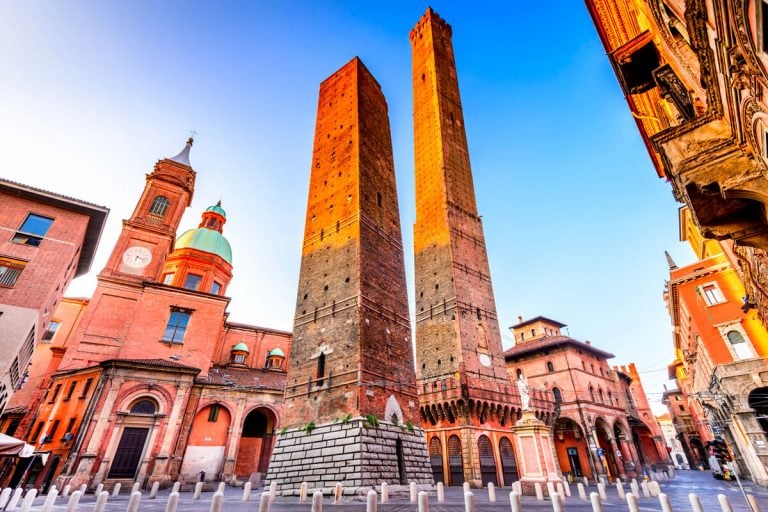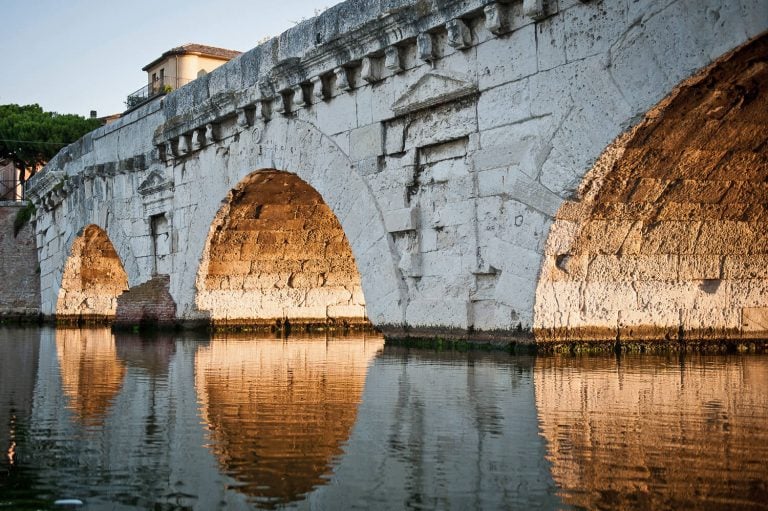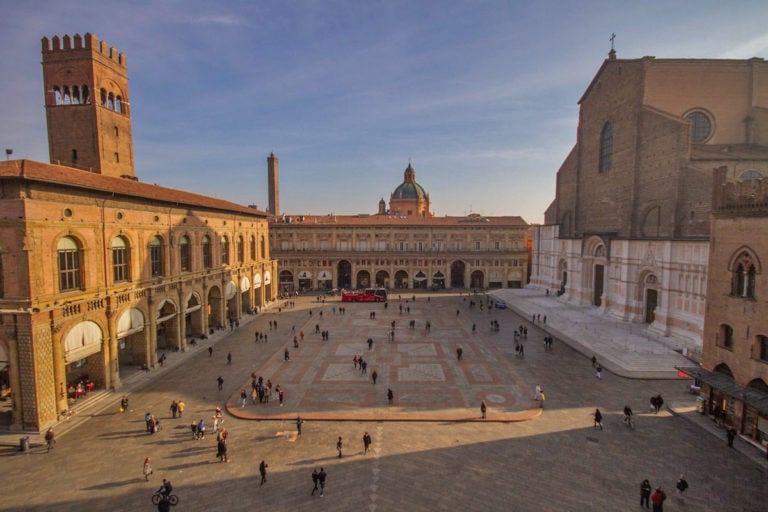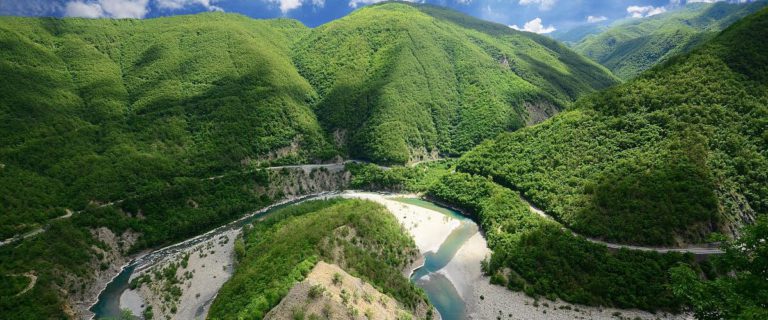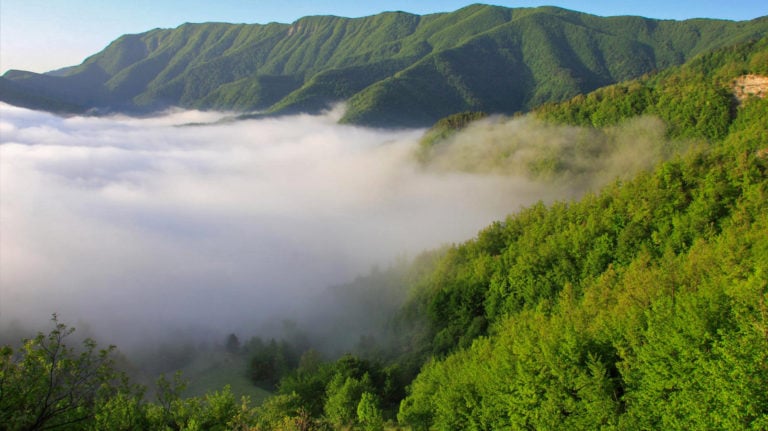Emilia-Romagna is a land rich in water, rivers and streams. Two of Italy’s longest rivers flow here: on the one hand the Po River, flowing from Piacenza to the Adriatic Sea, and on the other the Tiber River, sourcing from the hills of Romagna.
This particular hydrogeological and geomorphological conformation resulted in the need for men to build bridges and constructions to overcome natural limits and obstacles since ancient times, allowing them to connect different territories.
Today, Emilia-Romagna features a large number of bridges, built in different periods and with different designs. Some of them are even internationally renowned and deserve to be visited and crossed at least once in a lifetime. Here are our picks!
The bridge of Tiberius (Rimini)
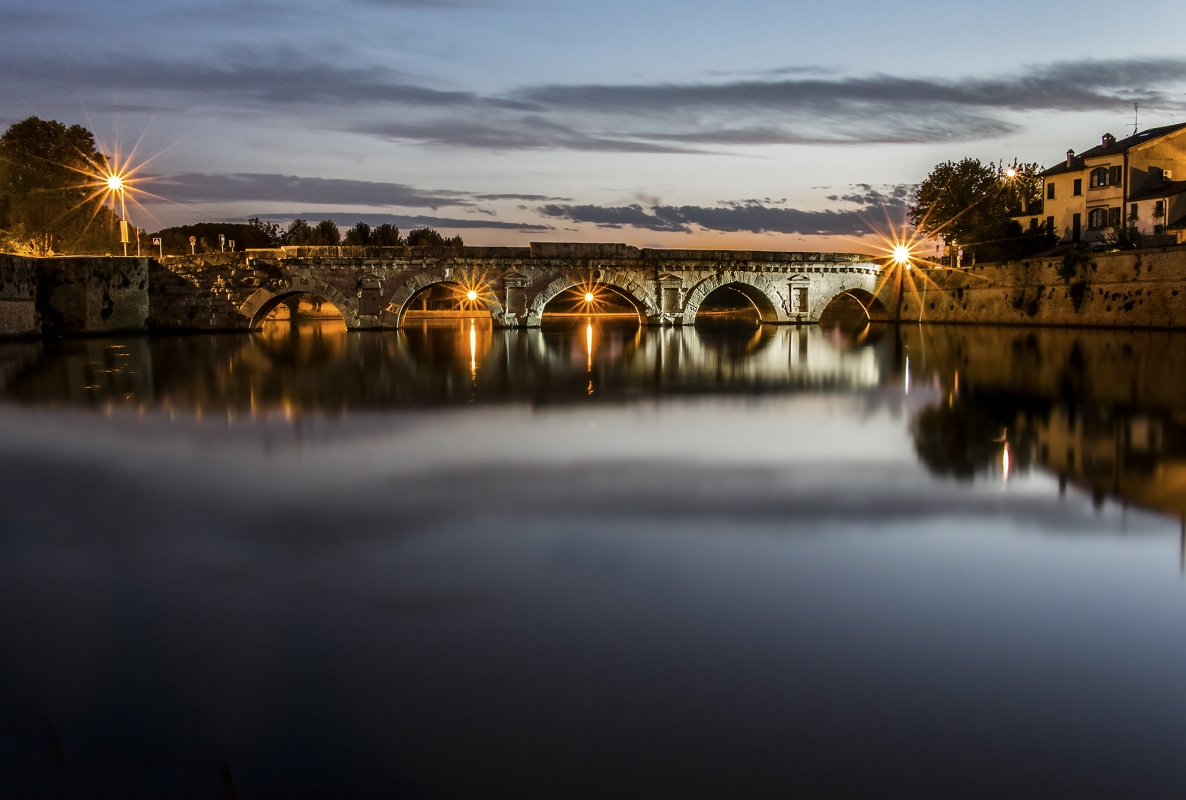
The majestic Bridge of Tiberius in Rimini comes straight out of ancient Rome, dates back to 21 AD and has recently turned 2,000 years old.
With its 5 arches and 74 metres in length, it still joins the streets of the old town by crossing the old course of the Marecchia river, making the historical centre of the city easily reachable on foot
NOTE = it is undoubtedly one of the oldest and most evocative Roman bridges still existing in the world.
Ponte Gobbo, Bobbio (PC)
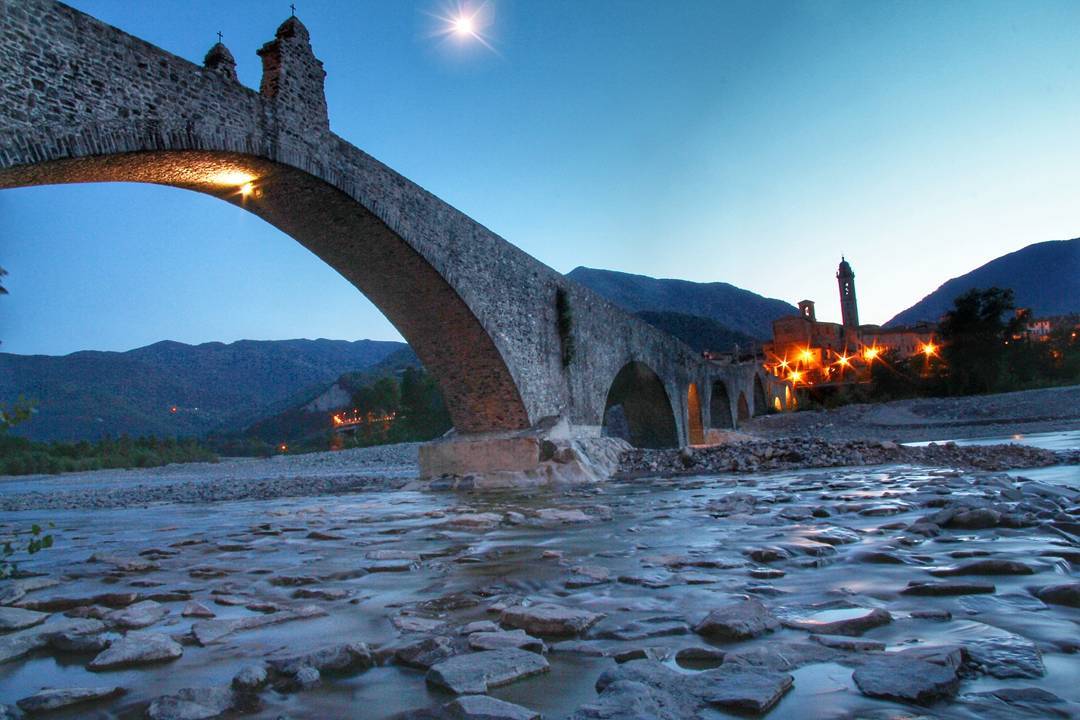
Ponte Gobbo (lit. the hunchbacked bridge) in Bobbio – also known as Ponte Vecchio or Ponte del Diavolo (lit. the Devil’s Bridge) – has always been called like this because of its strange shape.
A good 280 metres long, its design appears somewhat irregular, partly due to its 11 spans that differ in span and height.
Although it is impossible to precisely date its construction, it is certain that the current passageway actually lies on a structure from the Roman era.
Its current architecture actually dates back to the 7th century AD, with subsequent reconstructions, and is closely linked to the work of evangelisation of this territory by monk Columbanus.
The imaginative legend of the construction of the bridge by the Devil seem to be related right to the figure of Saint Columbanus.
Today it is used only as a footbridge, has become the symbol of the village and is one of Italy’s most suggestive bridges.
NOTE = perhaps one of the strangest and most original architectural structures in Italy!
Le vele di Calatrava, Reggio Emilia (RE)
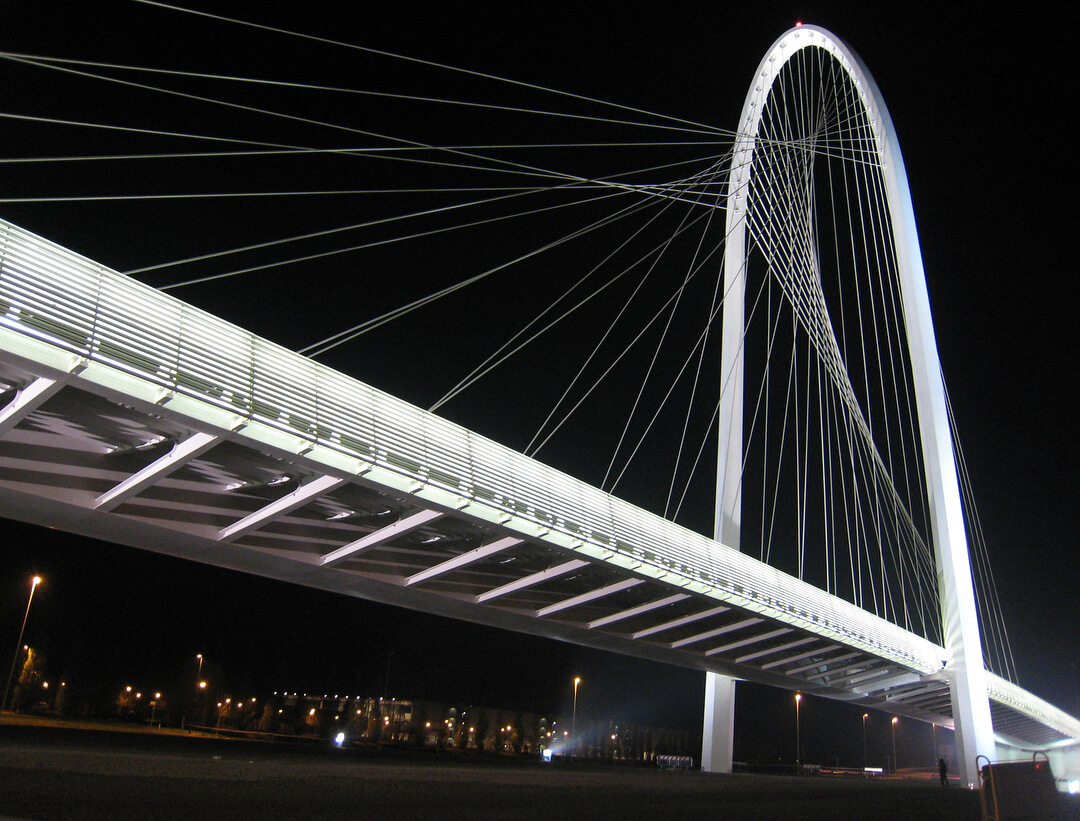
We challenge anyone not to be impressed by the enormous white arches vertically cutting the sky on the A1 Milan-Naples motorway when they reach the Reggio Emilia exit.
Fruit of the genius of Spanish architect Santiago Calatrava, these enormous structures were built for the passage of the high-speed railway line.
The project, unofficially known as Calatrava’s sails, has redeveloped the entire so-called Northern Area of the city of Reggio Emilia in an area of 2 square kilometres, including the Mediopadana high-speed railway station, the new skilfully decorated motorway tollgate, and the three bridges along the new equipped road axis connecting Reggio to the Lower Emilian plain.
The latter in particular are magnificent works of architecture and engineering consisting of a central arched bridge and two cable-stayed side bridges that stylistically echo the dictates of the organic design typical of Calatrava’s design.
NOTE = a modern note stands out vertically against the flat landscape of the Po Valley. Insider tip: pass under them as day falls and you will be amazed by their lighting, powered by clean energy derived from renewable sources.
Trepponti, Comacchio (FE)
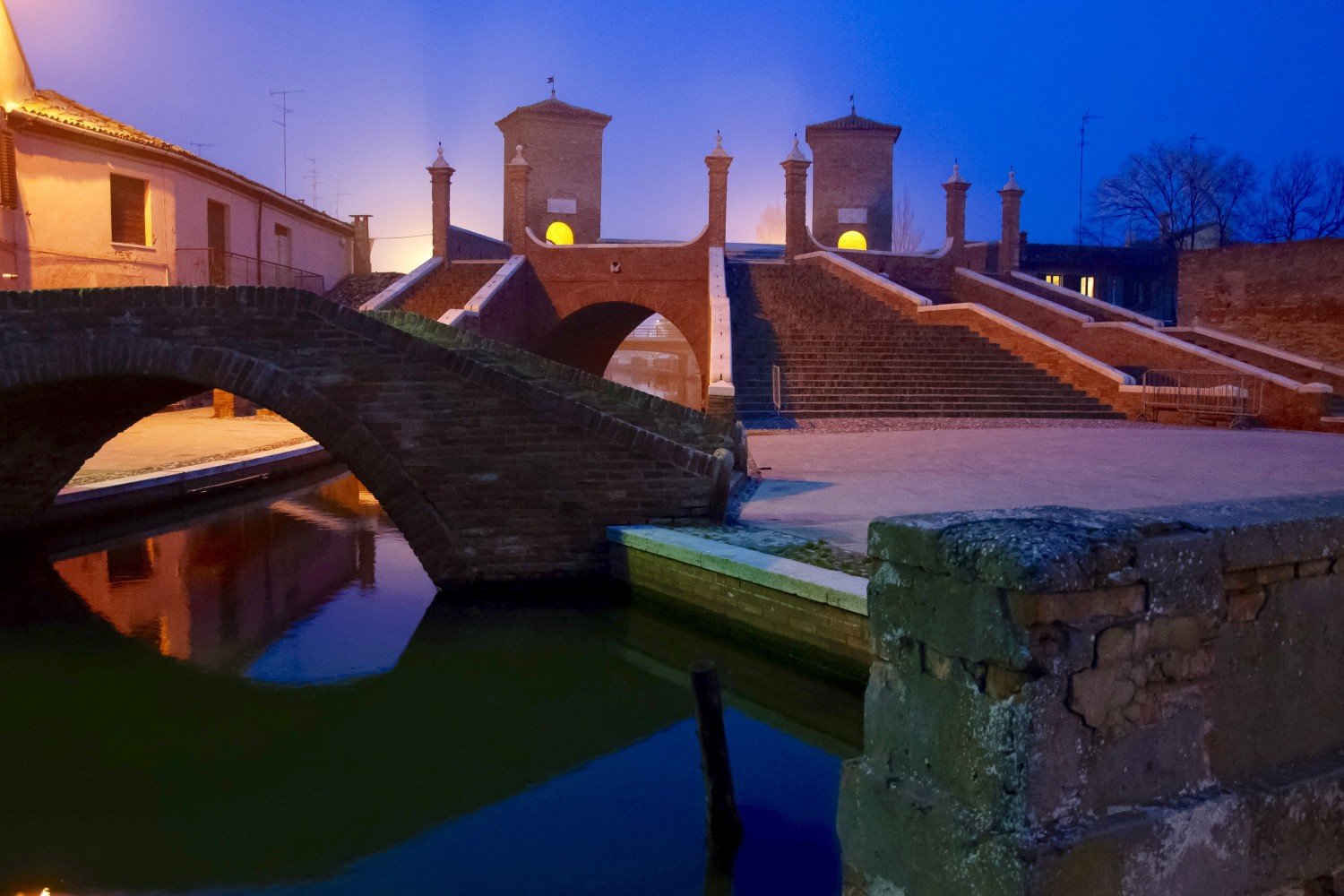
Since 1638, the Trepponti bridge has left any tourist visiting Comacchio speechless.
Designed by Luca Danese from Ravenna and built by Giovanni Pietro from Lugano at the behest of Cardinal Giovan Battista Pallotta (1631-1634), it once served as a fortified gateway for those arriving in town directly from the sea.
It represented a sort of link between the navigable ‘Pallotta’ canal and the city centre, overlooking a complex intersection of canals: Sant’Agostino, San Pietro, Borgo and Peschiera.
Even today it is impossible not to notice its imposing brick architecture, including no less than five wide round-arched staircases (three at the front and two at the back), leading to a small square at the top from which to enjoy one of Comacchio’s most magical views.
NOTE = in the evening, when the monument is illuminated, its profile is reflected in the water, creating a magical effect. Bring your camera!
Ponte Alidosi, Castel del Rio (BO)
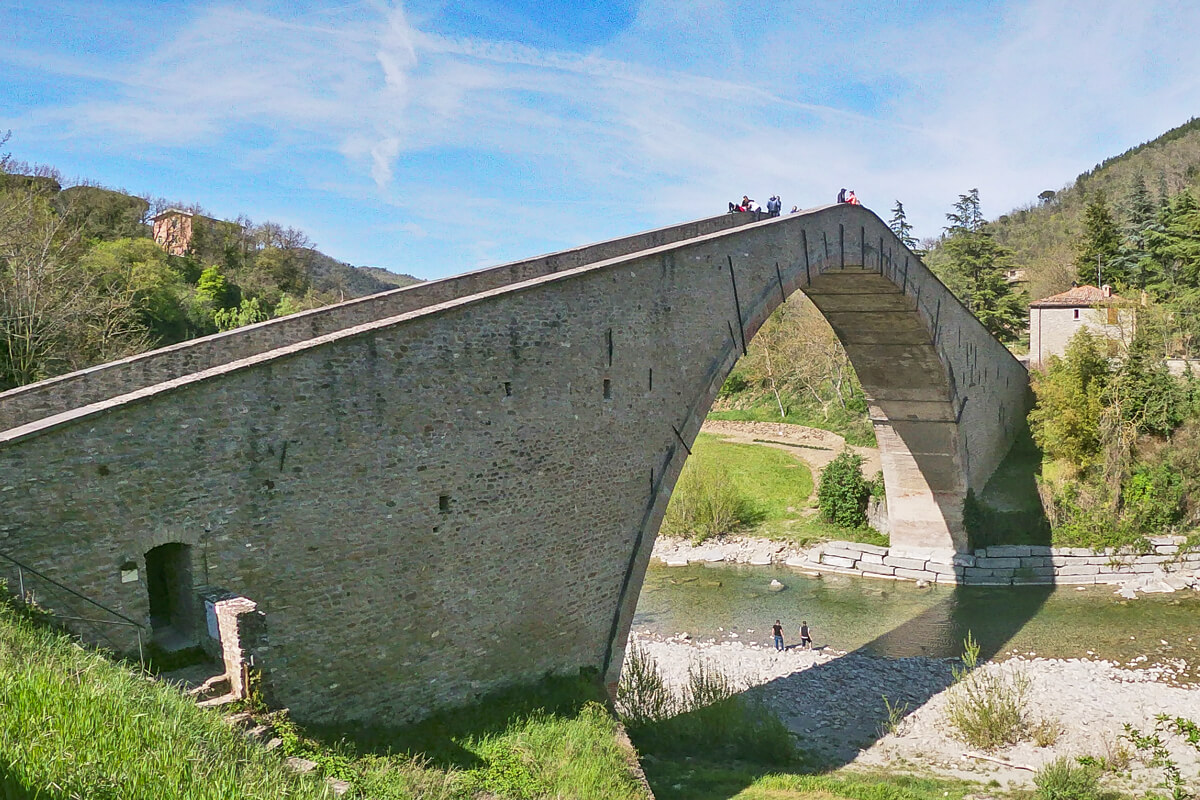
In Castel del Rio, in the hinterland of Imola, Ponte Alidosi has stood over the Santerno River for more than five hundred years.
The structure, with its characteristic ‘humpback’ shape, was built starting in 1499 by architect Andrea Gurrieri da Imola, for a price of about 500 gold ducats.
The members of the Alidosi family were magnates, who thus firmly asserted their power over this territory after a period of uncertainty.
NOTE: elected a national monument in 1897, the bridge has five rooms inside, which once served as prisons and as a shelter for the guards engaged in the collection of taxes.
Other bridges in Emilia-Romagna
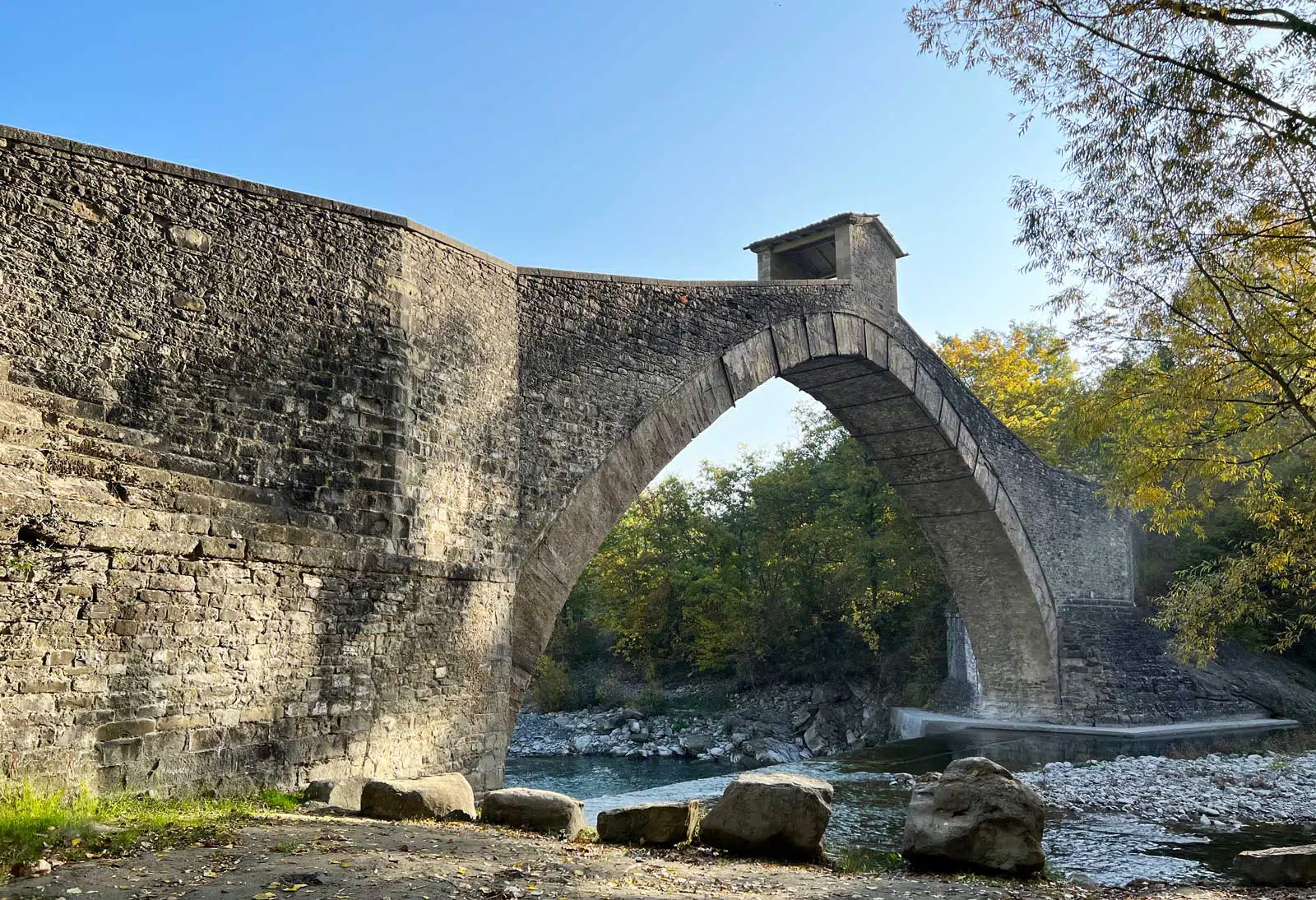
However, the region features other bridges that are worth knowing and crossing. Some of these are set in very evocative landscape and natural areas that deserve a prolonged visit.
These include, for example:
- Ponte di Olina in the municipality of Pavullo nel Frignano, built over the Scotenna stream in 1522 to facilitate the connection between Modena and Tuscany;
- Ponte sul Taro, built in the early 19th century by Maria Luisa of Habsburg-Lorraine and for a long time considered Europe’s longest bridge with its 566 metres in length and 8 metres in width;
- Ponte della Maestà in Portico di Romagna;
- Ponte di Ca’ di Gnano in Villa Minozzo over the Dolo river.
Worth a mention are also the pontoon bridge connecting Gorino Veneto to Gorino Ferrarese and Ponte di Vizzano, along the routes of Via degli Dei and Via della Lana e della Seta.
Author

Davide Marino
Davide Marino was born archaeologist but ended up doing other things. Rational – but not methodic, slow – but passionate. A young enthusiast with grey hair
You may also like
10 good reasons to come in Emilia Romagna
by Davide Marino /// February 22, 2018
6 squares in Emilia-Romagna you absolutely cannot miss
by Walter Manni /// January 19, 2024

Interested in our newsletter?
Every first of the month, an email (in Italian) with selected contents and upcoming events.
Breathtaking landscapes in Emilia… and where to find them
by Davide Marino /// July 9, 2019
